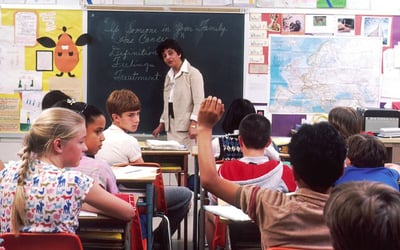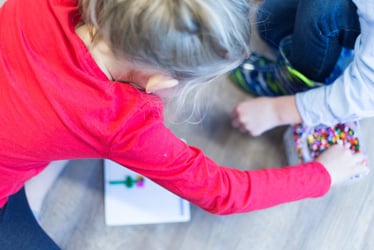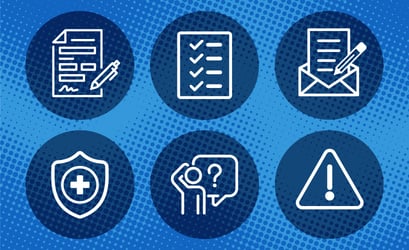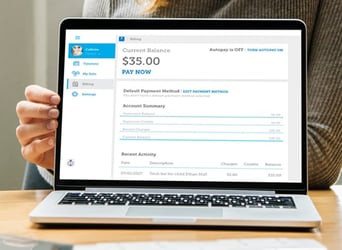Daycare, preschool, and child care are all terms for early education. But understanding the difference between them is just as important.
Finding a child care provider that provides what each family is looking for can be complex. There are different child care services, some more academic and others more social in nature. You might be wondering how the various programs and care options differ, including the services they offer and why they may or may not be regulated.
In this post, we’ll take a look at the practical meaning behind daycare vs. preschool and other child care program terms that you may encounter. We will examine the similarities and differences between daycare and preschool and what you can commonly expect from each type of program.
Child care is vital to society, and the laws must be well regulated. Daycare and preschool programs should also be in line with regulations. State regulators must license both daycare and preschool programs.
Preschools and daycares exist all over the country and have been around for decades. They are privately run by teachers, directors, and other employees in the education field. They offer various services, including meals, snacks, naps, outdoor play and learning activities.
All educators and teachers are trained to foster a child’s development. They provide a safe and nurturing environment, allowing your child to reach their full potential by graduating from kindergarten ready for formal schooling.
To help find which child care program is suitable for a family, they often have various names. Child care is the most common term covering most types of child care programs that serve kids before school age. Daycare or “nursery” is commonly used to refer to watching children while parents are at work.
The term preschool usually represents a center that focuses on academics and preparation for grade school. Preschools are best suited for toddlers.
Daycare centers, unlike preschool, are less structured, play-based programs without a set curriculum. Daycares focus on helping children socialized and learn important interaction developmental skills that will help them in preschool and onward.
What is Daycare?
While daycare is a simple term, it refers to a range of childcare options that help you when you’re at work. Whether you’re looking for a full-time center-based program, a part-time, in-home daycare, a Waldorf-focused preschool. The options are endless. With multiple options, it can be hard to find care that fits a particular family’s needs. But having that kind of choice is a great benefit to finding a high-quality child care program.
High-Quality Child Care
Good news! No matter what type of child care a family chooses, there’s evidence that high-quality child care helps kids succeed. Studies show children who attend quality daycare, participants were found to exhibit improved behavior, get along with their peers better, and were even stronger readers than other students when they got to grade school. Academic preschools produce strong readers and children who excel in math. And the social interaction children get in a daycare setting may help them become better communicators.
What makes a daycare high quality? Well, I’m so glad you asked. At Action Learning Center, our goal is to support the children’s social and emotional development to keep them safe and healthy while helping them reach their intellectual potential. We are also here to provide a nurturing environment that allows children to learn how to get along with other kids and learn the skills necessary for school success.
What is Preschool?
When you first think about preschool, it’s natural to wonder how it’s different from daycare. One of the most significant differences is philosophy: While daycare facilities are centered around care and nurturing, preschools focus on education.
As of 2001, more than half of three and four-year-olds were enrolled in preschool programs to prepare them for entrance into regular classroom settings. Especially with the rise of mothers working out of the home, childcare services have become a huge demand. Parents turn to preschools to give their children a head start academically while also socializing them with other children and keeping them busy.
Often childcare is known by other names like preschool, daycare, and nursery school. However, each of these programs varies widely in setting, format, and educational philosophy. To sum it up, preschool is an educational establishment where children enjoy the day-to-day benefits of learning and playing in a safe, friendly environment offered to children four to six years of age.
Preschool offers a learning space for childhood education to children before kindergarten. It may be publicly or privately operated and subsidized from public funds.
Educational child care resources
Now more than ever, we want to keep our children actively engaged in positive activities. There are many ways to help them experience beauty and fun and learn new things about our world. To give children the most to teach them excitingly, explore these resources.
Daycare vs Preschool: The Key Differences
Preschool and daycare are often confused among parents, but they have very different meanings. The biggest difference between the two is the age differences that attend both programs. Daycare programs range from six weeks and older, while preschool is for children from 2 through 5 years of age.
Preschool is typically in place to teach children pre-academic skills to prepare them for grade school. Daycare, focusing on younger children will focus on social skills.
Child care is a big decision, and parents always have questions about the differences between preschool and daycare. But there is one thing that both preschools and daycare facilities have in common–they are all licensed through the state. That being said, the pressure of finding the right program can be less daunting knowing that legitimate facilities are licensed. All childcare programs have their ups and downs, no days are ever smooth sailing when children are involved. That’s why it’s great that both daycare and preschool’s staff has to be trained and meet qualifications for every situation. Now, let’s focus on the differences between preschool vs daycare.
Age Difference
A difference between daycare and preschool is the age. Daycare is generally for infants and toddlers although some may offer after school programs for older kids. Daycare are suited for infants and toddlers, although some may offer after school programs for older kids. In a nutshell, daycare is a place where your children can play while you work. Naturally, the best daycares aren’t free and they admit limited numbers of children at a time.
There are several benefits to full-time daycare services. This can include more socialization, learning how to interact with each other and play well with others, and an overall education being provided by the staff.
The youngest students at most preschools are five years old, with some preschools accepting children as young as three. The curriculum stresses school readiness and social skills. Preschool focuses on getting the children ready for kindergarten and preparing them for a classroom setting.
Schedule
A quality daycare center should offer both full and part time options. You don’t have to worry about dropping your child off as early or late as they will be safe and secure while you are at work.
A significant difference is that most preschools don’t have as flexible hours like daycare. Many preschools have schedules that are seasonal, with time off for educators, holidays, and breaks. This can significantly affect working parents who rely on child care year-round. But get them in the habit of working around a traditional school schedule.
Working parents almost always need year-round care. Some elementary schools start with preschools that offer child care before and after school hours.
Caregiver Staff
The biggest factor you should consider is the child to teacher ratio and varies across the nation. Many parents are searching for a preschool that offers small class sizes and more individualized instruction. Smaller class sizes means each child receives more attention and develops the confidence they need to progress and excel.
By law, child care ratios vary based on a child’s age. For infants in a daycare center, the ratios range from 1:3 to 1:5, depending on your state and the number of children at the facility.
As your child gets older, the ratio of care providers to children will change, and the state laws generally permit a 1:12 child care ratio for ages 3-5, though some child care centers will operate with a lower ratio to provide children more personalized attention.
Children are in a mixed-age environment in a family or in-home style daycare and that will change the ratio. In-home daycare centers provide the flexibility of a private childcare environment. They are best for part-time and temporary care. An in-home caregiver watches up to ten children at a time, usually with no more than two infants.
Potty Breaks
Both in-home and childcare centers require a child to be potty trained once they are 3.
Realistically, a child won’t be potty trained by a certain date. Although you may have set expectations for your child’s milestone, it is typically developmentally inappropriate to do so. As a result of child care regulations, many facilities do not have changing stations. If a child is still in diapers, it may take some extra planning on the parent(s) part. And when since most preschools’ ratio is low, staff cannot provide the one-on-one attention each child needs. Since daycare typically serves children ages 0-3, daycare staff are expected to change diapers.
With the changing demands of potty training, many preschools simply cannot accommodate child diapers. Therefore, if you have a child who is hesitant to use the potty, consider this point when making your preschool selection decision.









